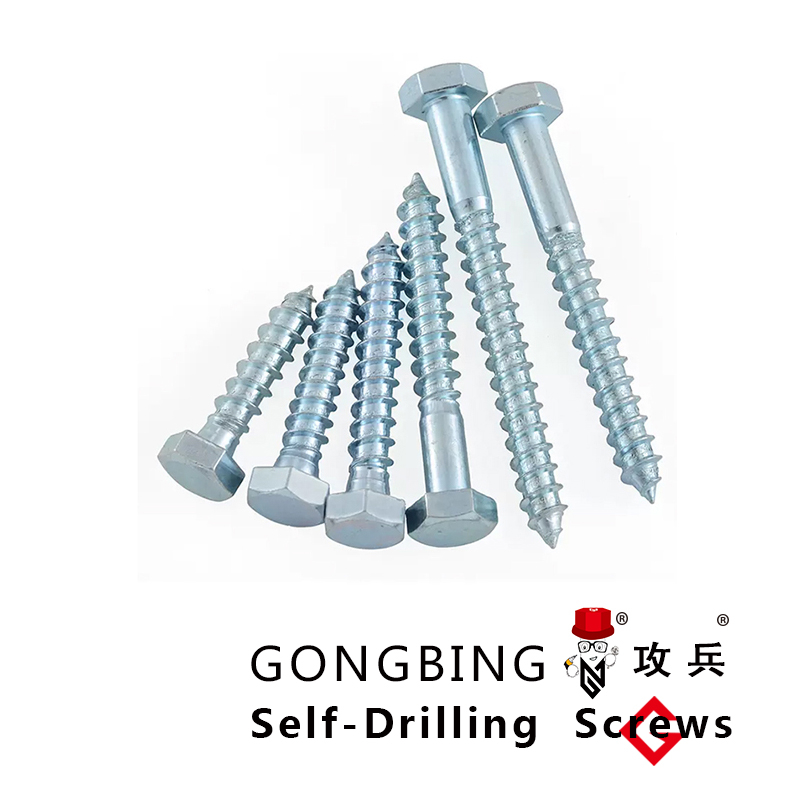chipboard screw
The Versatility of Chipboard Screws in Modern Construction
In the realm of woodworking and furniture design, chipboard screws have emerged as an essential component that contributes significantly to the strength and durability of various projects. These screws, specifically designed for use with particle board and similar materials, offer unique advantages that make them a preferred choice among carpenters, DIY enthusiasts, and furniture manufacturers alike.
Chipboard screws are characterized by their unique thread design and sharp point, which allows them to effectively grip into chipboard and particle board without causing the material to split. The construction of chipboard often involves combining wood particles and adhesives, making it more susceptible to damage from traditional screws. However, the engineering behind chipboard screws mitigates this risk, providing a secure and reliable fastening solution.
One notable feature of chipboard screws is their coarse threads. This design not only enhances the screw's hold but also reduces the chances of stripping, a common issue when working with softer materials. Additionally, chipboard screws often come with a washer head, which distributes pressure evenly over the surface, further preventing material damage and ensuring a tight fit. With these innovative characteristics, chipboard screws are ideal for a variety of applications, ranging from assembling flat-pack furniture to constructing cabinets and shelving.
chipboard screw

The benefits of chipboard screws extend beyond functionality. They also play a significant role in enhancing the aesthetic appeal of finished products. Since many furniture pieces are designed to be visible, manufacturers often prioritize screws that can be easily concealed. Chipboard screws are typically available in various colors and finishes, allowing them to blend seamlessly with the materials they are used with. This attention to detail ensures that the final product remains visually appealing while maintaining structural integrity.
Environmental considerations also come into play when discussing chipboard screws. As the demand for sustainable practices in construction grows, the use of chipboard—often made from recycled wood—paired with efficient fastening solutions like chipboard screws presents a more eco-friendly option. Utilizing these screws reduces waste and promotes responsible sourcing, aligning with the values of modern consumers who are increasingly conscious of their environmental impact.
In addition to their practical applications, chipboard screws are user-friendly, making them accessible for both professionals and hobbyists. They can be easily driven into materials with minimal effort, often requiring just a standard screwdriver or a power drill, making them a convenient choice for various projects. The combination of ease of use, reliability, and aesthetic versatility solidifies their position as a staple in the toolbox of anyone engaged in woodworking or furniture assembly.
In conclusion, chipboard screws are a quintessential component in the construction and design of modern furniture and fixtures. Their innovative design, versatility, and environmentally friendly attributes make them an indispensable tool for anyone looking to create durable, attractive, and functional woodworking projects. As trends continue to shift towards sustainability and efficiency, chipboard screws are likely to remain at the forefront of the industry, supporting a new generation of creativity in construction.
-
Weatherproof Plastic Expansion Anchors for OutdoorNewsJun.06,2025
-
Sustainability in the Supply Chain: Eco-Friendly TEK Screws ProductionNewsJun.06,2025
-
Load-Bearing Capacity of External Insulation FixingsNewsJun.06,2025
-
Double Head Bolts: Enhancing Efficiency in Industrial MachineryNewsJun.06,2025
-
Corrosion Resistance in Chipboard Screws: Coatings for Wholesale DurabilityNewsJun.06,2025
-
Butterfly Toggle Bolts : Enhancing Structural ResilienceNewsJun.06,2025
